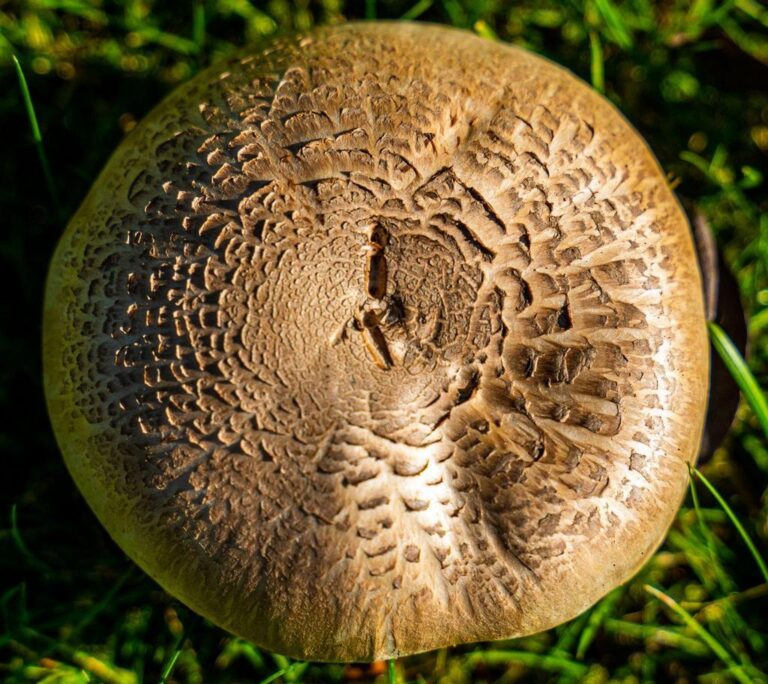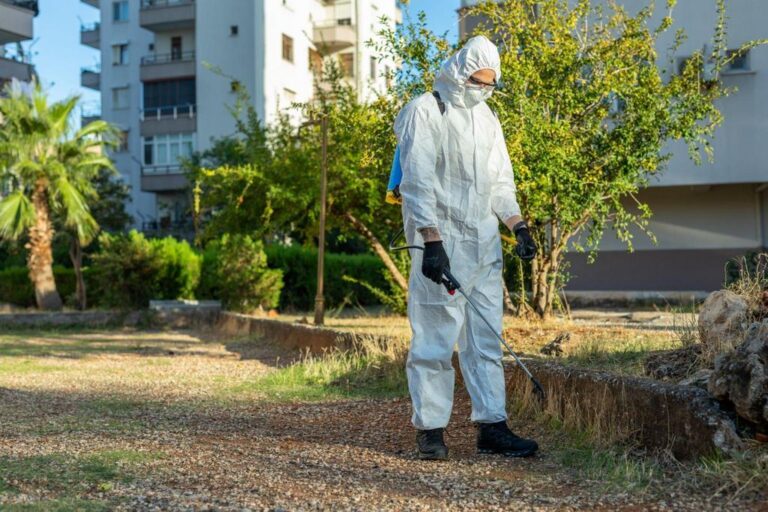Cantaloupe Leaves Wilting or Drooping: Here’s Why and How to Fix Them
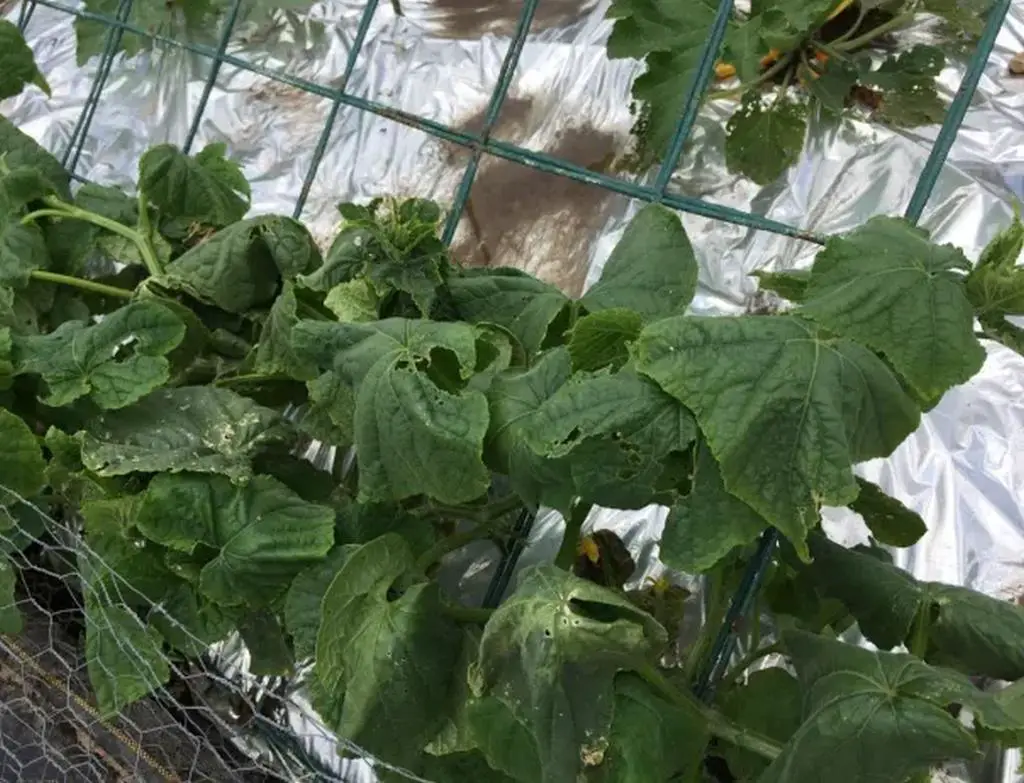
Are you a cantaloupe grower? Have you ever walked out to your garden only to find that your cantaloupe leaves are wilting or drooping?
Don’t worry, you’re not alone! Cantaloupe growers often have trouble with leaves that wilt and fall over, but it’s not always easy to figure out why. It could be a sign of many things, from environmental problems to fungal diseases and insect infestations.
In this article, we’ll talk about why your cantaloupe leaves might be wilting or falling over and give you some easy-to-follow tips on how to fix them.
Whether you’re a seasoned gardener or just starting out, this article will equip you with the knowledge and skills you need to grow healthy and vibrant cantaloupes. So, grab a cup of coffee, get comfortable, and let’s get started on this journey to a bountiful harvest!
Why Cantaloupe Leaves Wilting or Drooping
Cantaloupes are a sweet and delicious fruit, but when the leaves start to wilt or droop, it can be a sign that something is wrong. There are many things that can cause leaves to wilt or fall off, such as environmental stress, diseases, and pests. If left untreated, these problems can affect the growth and health of the plant and even cause it to die.
So, it’s important to figure out why leaves are wilting or falling off and then take the steps needed to fix the problem. In this article, we’ll look at the most common reasons why cantaloupe leaves may wilt or hang down, as well as ways to fix each problem.
1. Cold Temperature
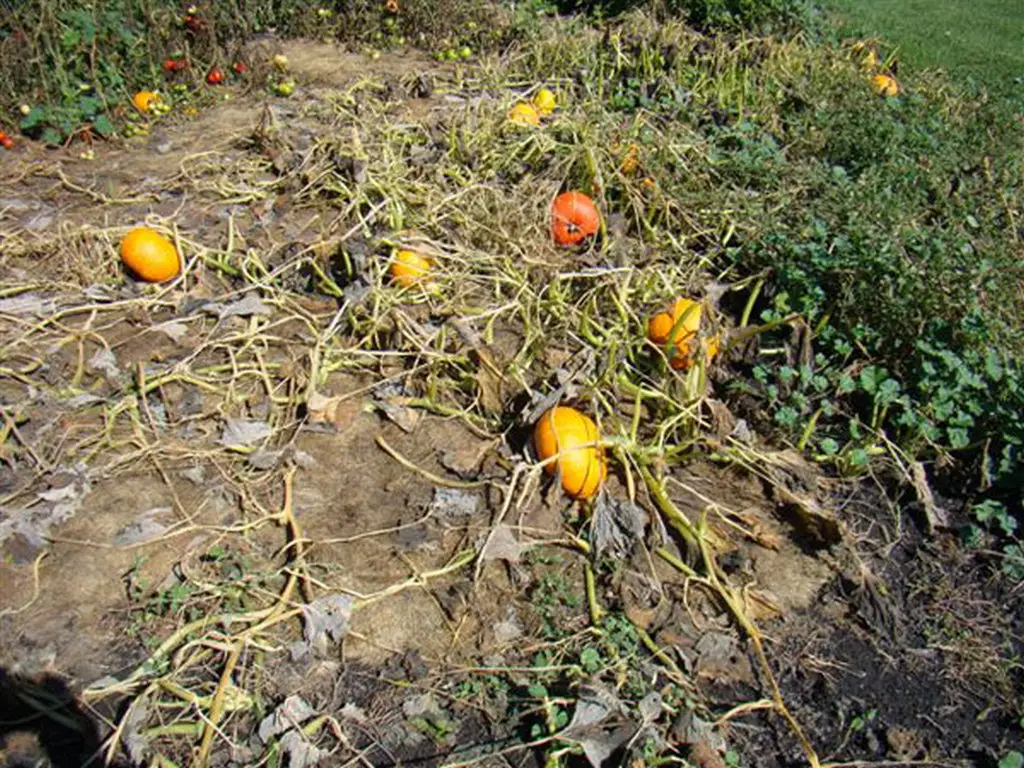
Cantaloupe plants prefer warm temperatures and are sensitive to cold weather, especially when the temperatures drop below 50 °F. Cold temperatures slow down the plant’s metabolism, making it difficult for the plant to take up nutrients and water from the soil. This can cause the cantaloupe leaves to wilt or droop.
In addition to the cold weather, wet conditions can also contribute to the problem. When the soil is cold and damp, it can limit the plant’s ability to absorb water and nutrients. This can cause the cantaloupe leaves to turn olive green to brown along the edges, which is a sign of stress and dehydration. If nothing is done, the whole leaf, the young shoots, or the whole plant may turn a different color and die.
How to Fix Cold Temperature
To keep cantaloupe leaves and cantaloupe flowers from falling off because of cold weather, it’s important to give them the right conditions to grow in. This can include planting them in a warm and sunny location, using a raised bed to improve soil drainage and warmth, and covering them with row covers or cloths to protect them from the cold. Also, giving the plants regular water and food can help keep them healthy and stop them from wilting.
2. Anthracnose (Colletotrichum obriculare)
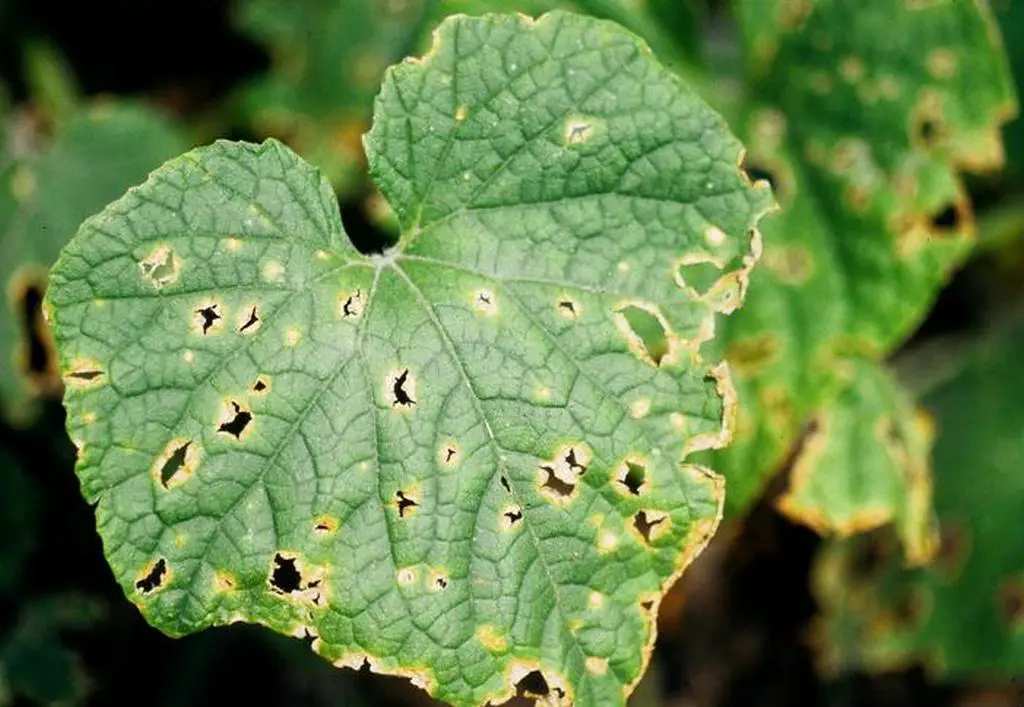
Anthracnose is a disease caused by the fungus Colletotrichum orbiculare. It can affect a wide range of crops, including cantaloupe and watermelon. Cantaloupe is especially prone to this disease, and vine infections can cause whole vines to die. Anthracnose typically appears in the middle to late season and can cause significant crop damage if left untreated.
One of the most common symptoms of anthracnose is the presence of dry, reddish-brown leaf spots, which are somewhat circular and can grow up to 1/2 inch across. These spots on the leaves are caused by the fungus taking over the plant tissue. Over time, these spots can cause a lot of damage to the leaves. In watermelon plants, leaf spots are smaller and almost black in color, but they are still a telltale sign of anthracnose infection.
Cantaloupe plants that have anthracnose may also have sunken, long, reddish-brown lesions on their vines that may leak a sticky fluid. The fungus gets into the plant’s blood vessels and causes these lesions, which can cause the vine to wilt and possibly die. The lesions may also provide an entry point for other pathogens, leading to further damage to the plant.
When it comes to fruit, anthracnose can cause circular sunken dark spots, with salmon-colored spores forming in the center when wet. This can cause serious damage to the fruit, making it unfit for eating or selling. In some cases, the fungus can also get into the seeds of the fruit, which could help spread the disease.
Treatment for Anthracnose (Colletotrichum obriculare)
When dealing with fungal problems in your garden, prevention is key. One way to stop the spread of disease is to choose plant varieties that are resistant to it. You may select western grown seeds that have not been exposed to the disease.
If this fungal problem is widespread, you should not save your own seed from plantings, as this can lead to disease spread.
To avoid spreading the disease, it’s important to keep out of gardens when plants are wet and to disinfect all garden tools after use. A solution of one part bleach to four parts water is an effective disinfectant for garden tools. Also, infected leaves, fruit, or stems shouldn’t be put in compost, and garden areas should be cleaned up well after harvest in the fall to make it harder for fungal spores to stay alive over the winter.
If your garden does become infected with fungal or bacterial diseases, there are a few treatment options available. You may try a broad-spectrum bio-fungicide like SERENADE Garden. It uses a patented strain of Bacillus subtilis that is approved for organic use. This non-toxic treatment is safe for honey bees and other beneficial insects.
Lastly, you could try neem oil spray, which is an organic, all-in-one fungicide, insecticide, and miticide that kills insect eggs, larvae, and adults while stopping fungi from attacking plants. It’s best to use neem oil spray early, at the first sign of spring budding, every 7–14 days as a preventive measure or every 7 days until problems are gone.
3. Squash Bug (Anasa tristis)
Cantaloupe leaf wilting or drooping can also be caused by squash bugs. These are common garden pests that feed on the leaves of many members of the cucurbit family, including cantaloupe, squash, and pumpkins.
When feeding on cantaloupe plants, squash bugs can cause yellowing and wilting of the leaves. While they are more commonly found on squash and pumpkins, they can still cause significant damage to cantaloupe plants.
Squash bugs are easily identified by their distinct appearance. Adults are about 5/8 inch long and are somewhat flattened, with gray to dark brown bodies and alternating orange and brown stripes on the edges of their abdomens. Nymphs are smaller, ranging from 1/10 to 1/2 inch in length, and are light to dark gray in color.
Squash bugs are active from May through September, and they can quickly cause damage to cantaloupe plants if not controlled.
Treatment and Prevention for Squash Bug (Anasa tristis)
To prevent damage, it’s important to monitor cantaloupe plants regularly for signs of squash bugs and to take action at the first sign of an infestation. You can get rid of the bugs by hand-picking them off the plants, spraying the plants with insecticidal soap or neem oil, or putting row covers over the plants to stop the bugs from laying their eggs on the leaves.
4. Bacterial Wilt (Erwinia tracheiphila)
Cantaloupe plants can be tricky to grow, even for seasoned gardeners. Erwinia tracheiphila, a type of bacteria, is the cause of bacterial wilt, which is one of the most common problems. This bacterium is carried by the striped or spotted cucumber beetle, which is present in most gardens.
When these beetles feed on the cantaloupe plant, they infect it with the bacteria, which then moves through the plant’s vascular system, blocking water and nutrient flow.
The first sign of bacterial wilt is dull, green cantaloupe leaves that wilt during the day but recover at night. As the disease progresses, the wilted leaves will die, and the wilt will spread down the vine until the entire plant is dead. The plants that are most likely to be affected are cucumbers and muskmelons. Less likely to be impacted are pumpkins and squash.
Treatment and Prevention for Bacterial Wilt (Erwinia tracheiphila)
So, how can you prevent bacterial wilt from taking hold in your garden? The best defense is a good offense.
- Start by selecting cantaloupe varieties that are resistant to bacterial wilt. Plant these varieties in a different location each year to help prevent a buildup of bacteria in the soil.
- Controlling insects is also very important, since the striped or spotted cucumber beetle is the main insect that spreads the disease.
- Use floating row covers to protect your plants early in the season, and spray with insecticides as needed.
- If you see signs of bacterial wilt in your cantaloupe plants, remove them quickly and throw them away the right way.
- Do not compost infected plants, as this can spread the disease.
- Use bleach or alcohol to clean your tools and equipment to stop the bacteria from getting spread even more.
- To reduce the number of bacteria in the soil, you could rotate your crops and plant different kinds of plants in the affected area.
5. Phytophthora Blight (Phytophthora capsici)
Cantaloupe is susceptible to Phytophthora Blight, caused by the pathogen Phytophthora capsici, which can cause wilting and drooping of the leaves. This blight can be especially bad because rot in the roots and crown can cause the whole plant to fall over. Symptoms of this disease include stem and leaf petiole lesions that are light to dark brown, water-soaked, and irregular, with large irregular brown spots on leaves.
Fruit that is affected by Phytophthora Blight can cause soft, wet spots on the fruit that grow and spread to cover large areas. Infected fruits are soft, easily punctured, and often collapse. They can also be covered with white fungus growth. This blight can also cause the stems to rot, which can cause the whole plant to fall over.
Treatment and Prevention for Phytophthora Blight (Phytophthora capsici)
Phytophthora blight can spread rapidly and cause significant losses to crops if left unchecked. Below are some actions you should take to treat this disease:
- To stop this disease from spreading, you should remove and destroy any infected plant parts, including fruit.
- Don’t plant cantaloupe in soil that has been used to grow peppers plants or tomatoes, which are also susceptible to this disease.
- Crop rotation can help prevent the buildup of the pathogen in the soil.
- Good cultural practices, like leaving enough space between plants, managing watering, and not watering from above, can also help lower the risk of infection.
6. Squash Vine Borer (Melittia cucurbitae)
Cantaloupes are a favorite crop for many gardeners, but they are also a favorite of the squash vine borer. This pest can quickly turn a healthy cantaloupe plant into a wilted mess.
The squash vine borer is a type of moth that lays its eggs on the stems of cantaloupe plants. When the eggs hatch, the larvae burrow into the stem and feed on the plant’s sap. This feeding causes cantaloupe leaves to yellow and wilt, and eventually the entire plant can die.
If you suspect your cantaloupe plant has squash vine borer, look for holes near the base of the plant that are filled with green to orange excrement. This is a sure sign that the larvae are present. The adult squash vine borer resembles a wasp and is most active from mid-June through July. It’s important to catch and control the squash vine borer early, before it has a chance to do serious damage to your cantaloupe plants.
Treatment and Prevention for Squash Vine Borer (Melittia cucurbitae)
Preventing squash vine borer infestations is the best way to protect your cantaloupe plants. Start by planting cantaloupes in a different location each year to help prevent a buildup of pests in the soil. Use floating row covers early in the season to keep adult squash vine borers from laying their eggs on your plants. Remove and destroy any plants that show signs of squash vine borer, and be sure to dispose of them properly. Finally, keep an eye out for the adult squash vine borer from mid-June through July and use sticky traps to catch and kill them.

